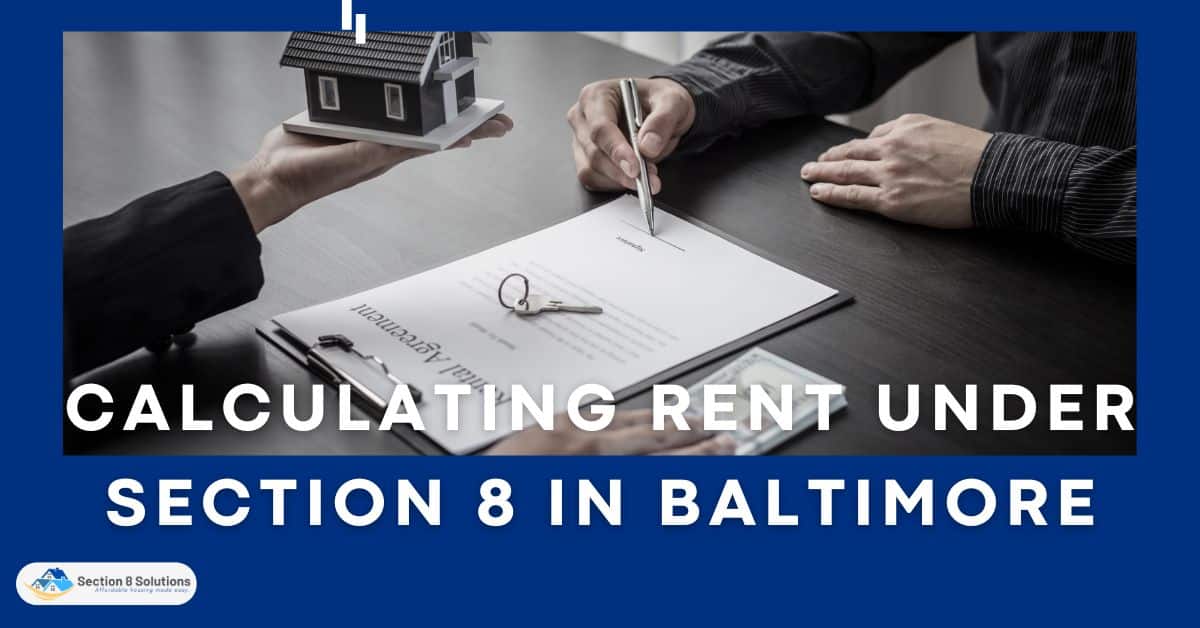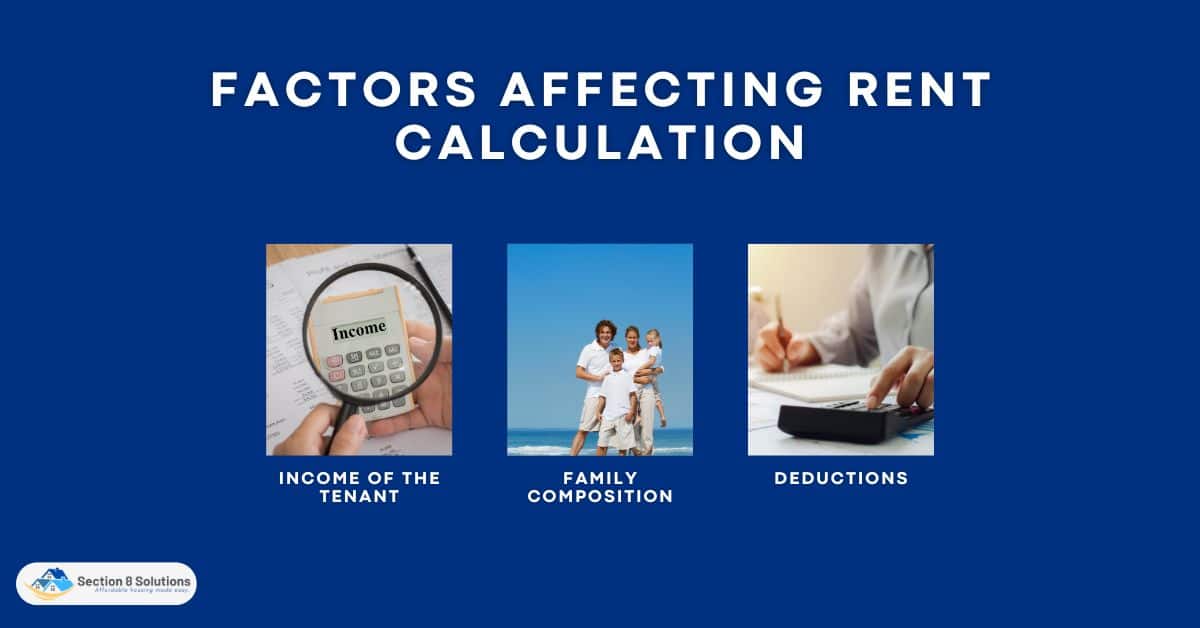Calculating rent under Section 8 in Baltimore involves a straightforward process. The rent is typically set at 30% of the household’s adjusted gross income, taking into account factors like family size and local housing allowances. This calculation ensures affordable housing for eligible individuals and families while adhering to the guidelines of the Section 8 program in Baltimore.
This comprehensive guide outlines the intricacies of calculating rent under Section 8 in Baltimore, shedding light on the process, the factors involved, and its significance.

The Foundation of Section 8 Housing Assistance
The Section 8 program is a vital pillar of Baltimore’s affordable housing strategy. Managed by the U.S. Department of Housing and Urban Development (HUD), it addresses the pressing need for accessible housing options for low-income families. In a city where affordable housing is a challenge, Section 8 plays a central role in bridging the gap between income levels and housing costs.
Section 8’s core objective is to alleviate the housing cost burden for those with limited financial resources. By subsidizing rent payments, the program ensures families can access safe and suitable housing, promoting financial stability and preventing homelessness. Collaborating with private landlords, Section 8 guarantees that housing quality meets established standards, contributing to the overall welfare of Baltimore’s neighborhoods.
In Baltimore’s high-cost living environment, Section 8 shines as a beacon of hope. It empowers individuals from diverse backgrounds to secure housing that would otherwise be financially unfeasible. As we delve into the details of rent calculation under Section 8, it’s clear that this program not only calculates figures but also embodies Baltimore’s commitment to equitable housing, fostering inclusive communities for everyone.

Rent Calculation Basics
The mechanism is elegantly simple yet impactful: tenants are required to contribute 30% of their Adjusted Gross Income (AGI) as rent. This approach, while straightforward, holds immense significance in curbing the rent burden on eligible participants and fostering a sustainable housing ecosystem.
Rent Calculation Formula:
The rent calculation process can be summarized in a brief table form:
| Step | Description |
|---|---|
| 1 | Calculate AGI: Sum of all income sources, adjusted for deductions and exclusions. |
| 2 | Determine 30%: Compute 30% of the AGI to establish the rent contribution. |
| 3 | Compare with Fair Market Rent (FMR): Ensure calculated rent aligns with local FMR. |
| 4 | Landlord Rent: HUD pays the remaining rent amount directly to the landlord. |
The 30% rule is more than just a numerical guideline – it’s a safeguard against housing instability. By tying rent to income, Section 8 promotes financial stability for participants. This approach prevents households from dedicating an excessive portion of their income to housing, allowing them to allocate resources to other vital needs such as education, healthcare, and savings.
The 30% rent calculation is the foundation of Baltimore’s Section 8 program, ensuring affordability, reducing financial strain, and fostering stable communities. Exploring adjusted gross income and rent factors reveals the program’s intricate effectiveness in tackling housing disparities.
Factors Affecting Rent Calculation
Calculating rent under the Section 8 Housing Choice Voucher Program involves a detailed process that takes various factors into account. These factors play a crucial role in determining the amount of rent a tenant is responsible for paying.

1. Income of the Tenant
Tenant income stands as a cornerstone in the rent calculation process within Section 8. This essential factor enables a system that balances fairness and accessibility, ensuring that housing remains within reach for families in need. Income limits, which flexibly adjust according to family size and local economic circumstances, form the basis of this approach. For tenants with higher incomes, a proportional increase in rent payment reflects their capacity to contribute.
2. Family Composition
The composition of a household holds considerable weight in the rent calculation process within Section 8. This determinant contributes to a tailored approach that ensures fairness and appropriateness in housing assistance. Larger families, who naturally require more living space, typically qualify for larger housing units. Consequently, the size of the family unit directly influences the rent amount they would pay. In parallel, smaller households have the potential to qualify for more compact housing units, which can lead to reduced rent payments.

3. Deductions
Allowable deductions from the tenant’s income can influence the final rent calculation. These deductions might include medical expenses, childcare expenses, and disability-related expenses. Deductions serve to lower the tenant’s overall income, which can lead to a reduction in their rent payment.
Understanding the factors that contribute to rent calculation in the Section 8 program is essential for both tenants and landlords. By comprehending the significance of tenant income, family size, and allowable deductions, individuals can make informed decisions about housing choices and financial planning.
Special Considerations and Local Baltimore Information
Navigating the rent calculation process under Section 8 in Baltimore involves recognizing the unique factors that shape the city’s housing landscape. Baltimore’s distinct characteristics bring forth specific considerations that impact rent determination, making it crucial for tenants and landlords to be well informed.

- Local Factors and Regulations: Baltimore’s housing market dynamics and local regulations play a significant role in rent calculation. Factors such as the availability of housing units, neighborhood variations, and economic conditions can influence the way rent is determined.
- Specific Regulations or Practices: Baltimore might have certain regulations or practices that differ from other locations. These could pertain to zoning laws, tenant protections, or even the interpretation of income and deductions.
- Resource and Assistance Information: For Baltimore residents seeking assistance or resources related to Section 8 housing, there are valuable avenues to explore. Local housing authorities, community organizations, and government agencies are excellent sources of information.
Understanding the intricacies of rent calculation under Section 8 in Baltimore requires an appreciation of the city’s unique context. By acknowledging the influence of local regulations, economic conditions, and community resources, individuals can make well-informed decisions.
Conclusion
Calculating rent under Section 8 in Baltimore is a dynamic process that involves careful consideration of various factors. From tenant income to deductions and local regulations, this comprehensive guide provides insight into the intricacies of rent calculation in Baltimore. With an understanding of the unique context, individuals can make informed decisions when seeking housing assistance. Ultimately, Section 8 empowers Baltimore’s communities by providing access to safe, secure, and affordable housing.












